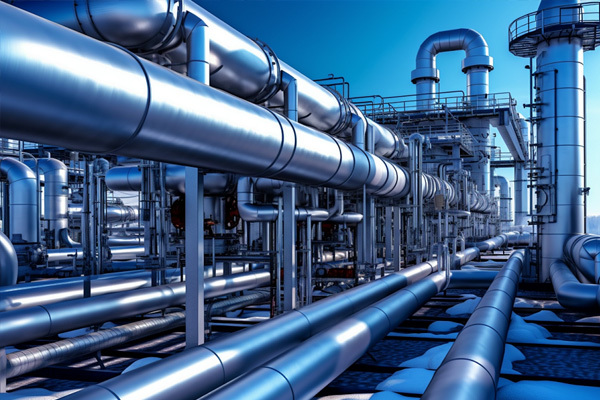How to maintain and inspect spring supports and hangers?
Mar 04,2025

1. Regular inspection plan
-Establish inspection cycle
-Determine the inspection cycle based on factors such as the operating conditions and importance of the pipeline system, as well as the environment in which the spring supports and hangers are located. For critical and high load operating pipeline systems, such as the main steam pipeline of thermal power plants or high-temperature and high-pressure pipelines in chemical plants, it is recommended to conduct inspections every 3-6 months; For general industrial pipelines or building water supply and drainage pipelines, the inspection cycle can be appropriately extended to 1-2 years.
-Check content planning
-Appearance inspection: Check the appearance of the support and hanger for any damage, including the shell, suspension rod, connectors, and other components of the support and hanger. Check for any deformation, corrosion, wear, paint peeling, etc. For example, in corrosive environments, check for signs of rust or chemical corrosion on metal parts.
-Spring condition inspection: Focus on the condition of the spring. Check whether the spring has excessive deformation, fatigue cracks, fractures, and other issues. Magnifying glasses or flaw detection equipment (such as magnetic particle flaw detectors or ultrasonic flaw detectors) can be used to inspect the surface and internal defects of springs.
-Connection inspection: Check the connection between various components of the support and hanger, including bolts, nuts, pins, etc. Ensure that the connectors are not loose, detached, or damaged. Use a wrench to check the tightness of the bolts, and tighten any loose bolts in a timely manner.
-Displacement and load inspection: If possible, check whether the displacement of the pipeline at the support and hanger is within the design allowable range, and whether the load borne by the support and hanger meets the design requirements. This may require the use of professional measuring equipment such as displacement sensors and force gauges.
2. Maintenance operation points
-Cleaning work
-Regularly clean the surface of spring supports and hangers of dust, oil stains, impurities, etc. These pollutants may accelerate the corrosion of components or affect the performance of supports and hangers. For areas that are difficult to clean, suitable cleaning agents and tools can be used for cleaning, but care should be taken to avoid damaging the support and hanger materials with cleaning agents.
-Lubrication treatment (if necessary)
-For components with relative motion, such as adjusting nuts, movable joints of suspension rods, etc., appropriate lubrication should be applied according to the actual situation. Choose appropriate lubricants, such as high-temperature grease (suitable for high-temperature environments) or regular lubricating oil, to reduce friction between components and prevent wear and sticking. But be careful to avoid lubricants entering the interior of the spring to avoid affecting its performance.
-Spring maintenance
-If slight deformation is found in the spring, but it does not exceed the allowable range, appropriate correction can be made to the spring. For springs with fatigue cracks, they should be replaced in a timely manner to avoid sudden breakage during operation. When replacing the spring, it is necessary to ensure that the model, specifications, and performance of the new spring are consistent with the original spring, including parameters such as the stiffness coefficient, working load range, and displacement compensation of the spring.
-Tightening and replacement of connectors
-For loose connectors, tighten them according to the specified torque. If damage is found to the connecting components, such as damaged bolt threads or broken pins, they should be replaced in a timely manner. When replacing connectors, choose components that meet the strength and material requirements to ensure the reliability of the connection.
-Adjustment and Calibration
-During maintenance, if there is a deviation in the displacement compensation function or bearing capacity of the spring support hanger, it may be necessary to adjust the support hanger. Adjust the compression of the spring again to meet the design requirements. During the adjustment process, it is necessary to strictly follow the operating procedures and use precise measuring tools such as calipers and dial gauges to ensure the accuracy of the adjustment.
3. Maintenance measures and precautions
-Fault diagnosis and evaluation
-When there is a malfunction in the spring support hanger, such as obvious sinking of the pipeline, abnormal vibration, spring breakage, etc., timely fault diagnosis should be carried out. By observing the fault phenomenon, checking the operation records, and analyzing the changes in the working conditions of the pipeline system, the cause and scope of the fault can be determined. For example, if the pipeline sinks, it may be caused by spring failure, loose connections, or overload of supports and hangers.
-Component replacement and repair
-Replace or repair damaged components based on the results of fault diagnosis. When replacing components, ensure that the quality and performance of the new components meet the requirements. For some complex support and hanger structures, such as constant force spring support and hanger, re debugging and calibration may be necessary after repairing or replacing components to ensure that their performance returns to normal.
-Security measures guarantee
-Necessary safety measures should be taken during maintenance work. For example, when inspecting and repairing a running pipeline system, it is necessary to first close the relevant equipment and valves, empty the medium in the pipeline, and avoid accidents such as medium leakage or burns. At the same time, maintenance personnel should wear appropriate personal protective equipment, such as helmets, seat belts, protective gloves, etc.
Hot Tags:
Contact Us
Email:
ZLWang@huaweibracket.com
Whatsapp:
Sales Phone:
Technical Phone:
Address:
East of Nanzigezhuang Village, Wuning Town, Muping District, Yantai City, Shandong Province
Related Blog

